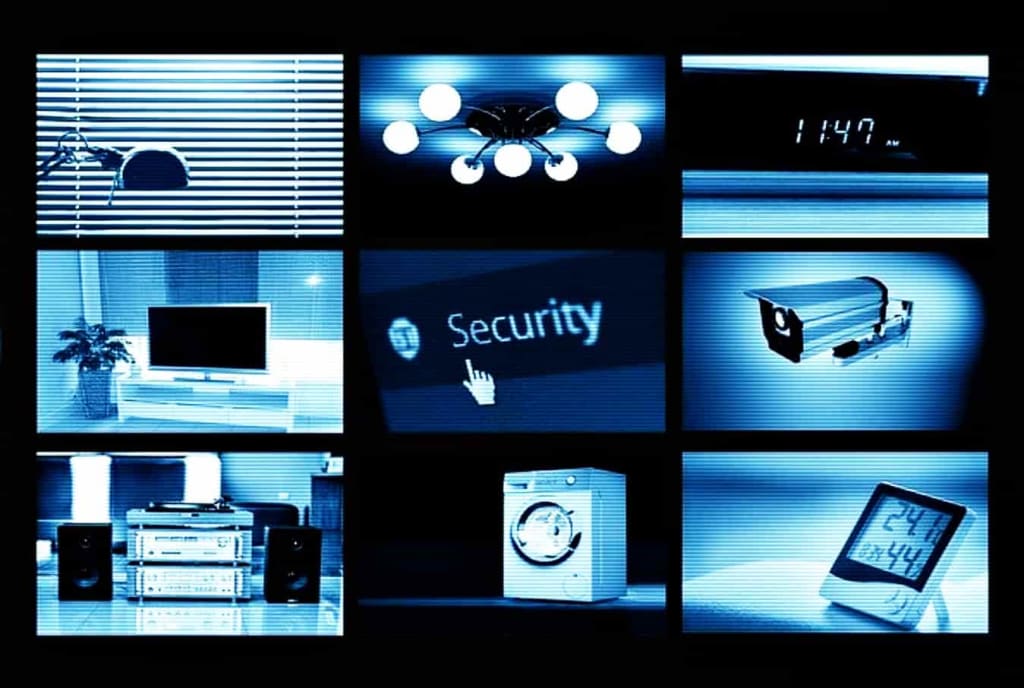How to Protect Yourself
10 Surprising Ways Hackers Can Exploit Your Smart Home Devices

In the past decade, the rise of smart home devices has made our lives more convenient and connected than ever before. From smart thermostats to security cameras, we can control almost every aspect of our home with the touch of a button. But as with any new technology, there are risks involved. Smart home devices are vulnerable to hacking, and cybercriminals are constantly finding new ways to exploit them. Here are 10 surprising ways hackers can exploit your smart home devices, and how to protect yourself.
Password Cracking
The most common way that hackers gain access to smart home devices is by cracking weak passwords. Many people use easy-to-guess passwords like "password" or "123456," making it easy for hackers to gain access to their devices. To protect yourself, use a strong, unique password for each of your smart home devices.
Malware
Malware is malicious software that can infect your smart home devices and steal your data. Hackers can spread malware through infected email attachments or links, so be careful when opening emails from unknown senders. Install antivirus software on your devices to protect against malware.
Phishing
Phishing is a tactic that hackers use to trick you into giving them your login credentials. They might send you an email that looks like it's from your smart home device manufacturer, asking you to log in and update your information. Always double-check the sender's email address and don't click on any links in suspicious emails.
Eavesdropping
Hackers can use your smart home devices to eavesdrop on your conversations. For example, they might hack into your smart speaker and listen in on your conversations. To protect yourself, disable the microphone on your smart speaker when you're not using it.
Brute Force Attacks
Brute force attacks are when hackers use automated tools to try to guess your password. They'll try thousands of different combinations until they find the right one. To protect yourself, use a strong password and enable two-factor authentication on your devices.
Outdated Firmware
Firmware is the software that runs your smart home devices. If your firmware is outdated, it could be vulnerable to security risks. Always update your firmware when a new version is available.
Default Settings
Smart home devices often come with default settings that are easy for hackers to exploit. For example, your smart security camera might come with a default password that's easy to guess. Always change the default settings on your devices to make them more secure.
Wi-Fi Network Vulnerabilities
Hackers can also gain access to your smart home devices through vulnerabilities in your Wi-Fi network. To protect yourself, use a strong, unique password for your Wi-Fi network and enable WPA2 encryption.
Unsecured Networks
If you're using your smart home devices on an unsecured public Wi-Fi network, you're putting yourself at risk. Hackers can easily intercept your data and steal your login credentials. Always use a VPN when connecting to public Wi-Fi networks.
Unsecured Bluetooth Connections
Bluetooth is a common way that smart home devices communicate with each other. But if your Bluetooth connection is unsecured, hackers can intercept your data and gain access to your devices. Always secure your Bluetooth connections with a password.
smart home devices are vulnerable to hacking, but there are steps you can take to protect yourself. Use strong, unique passwords for each of your devices, install antivirus software, and always update your firmware. Be cautious when opening emails from unknown senders and double-check the sender's email address. Change the default settings on your devices, use a strong password for your Wi-Fi network, and always use a VPN when connecting to public Wi-Fi networks. By taking these steps, you can significantly reduce the risk of hackers exploiting your smart home devices.
It's also important to stay informed about the latest security threats and best practices for smart home security. Follow your device manufacturer's security guidelines and stay up to date with the latest firmware updates. Be wary of any suspicious activity on your devices, such as unexpected logins or strange behavior, and report any issues to your device manufacturer immediately.
Finally, consider investing in a smart home security system that can monitor your devices and alert you to any suspicious activity. There are many affordable options available, and they can provide an extra layer of protection for your smart home devices.
while smart home devices offer many benefits, they also come with security risks. By being vigilant and taking the necessary precautions, you can protect yourself and your devices from hackers. Always use strong passwords, keep your firmware up to date, and be cautious when opening emails or using public Wi-Fi networks. With these steps in place, you can enjoy the convenience of smart home devices without worrying about the security risks.
About the Creator
On stop Tech-News
On stop Tech-News is a tech enthusiast and writer who provides expert analysis and insights to stay up-to-date in the fast-paced world of tech.
Enjoyed the story? Support the Creator.
Subscribe for free to receive all their stories in your feed. You could also pledge your support or give them a one-off tip, letting them know you appreciate their work.






Comments
There are no comments for this story
Be the first to respond and start the conversation.